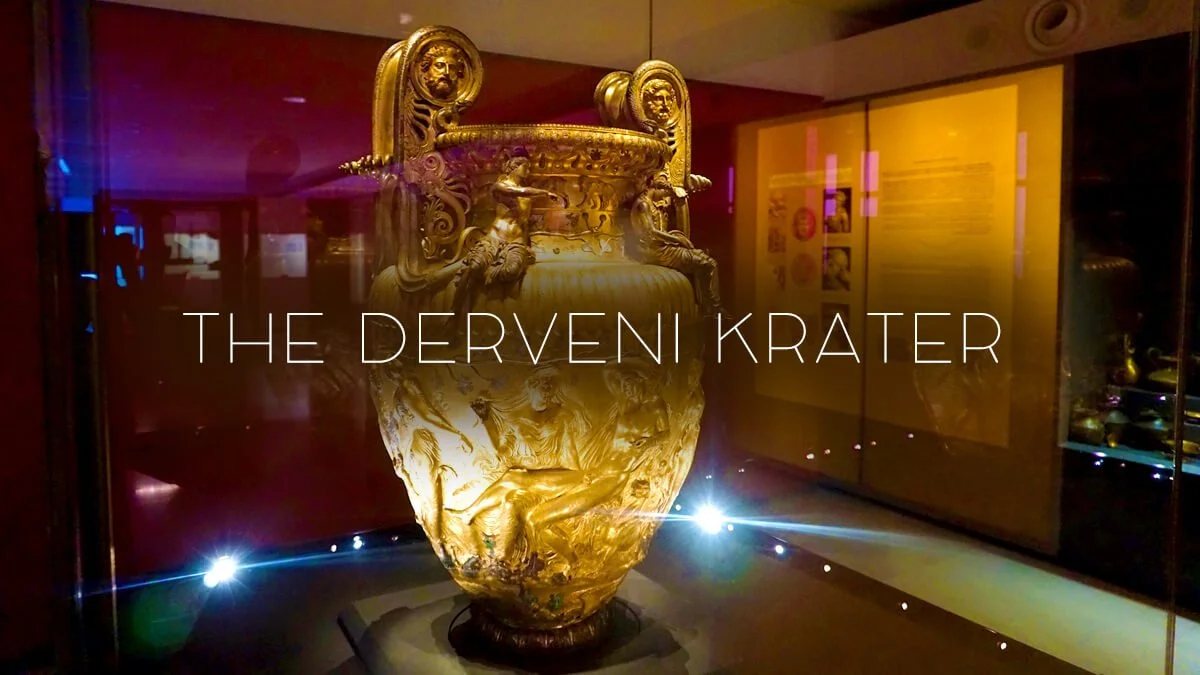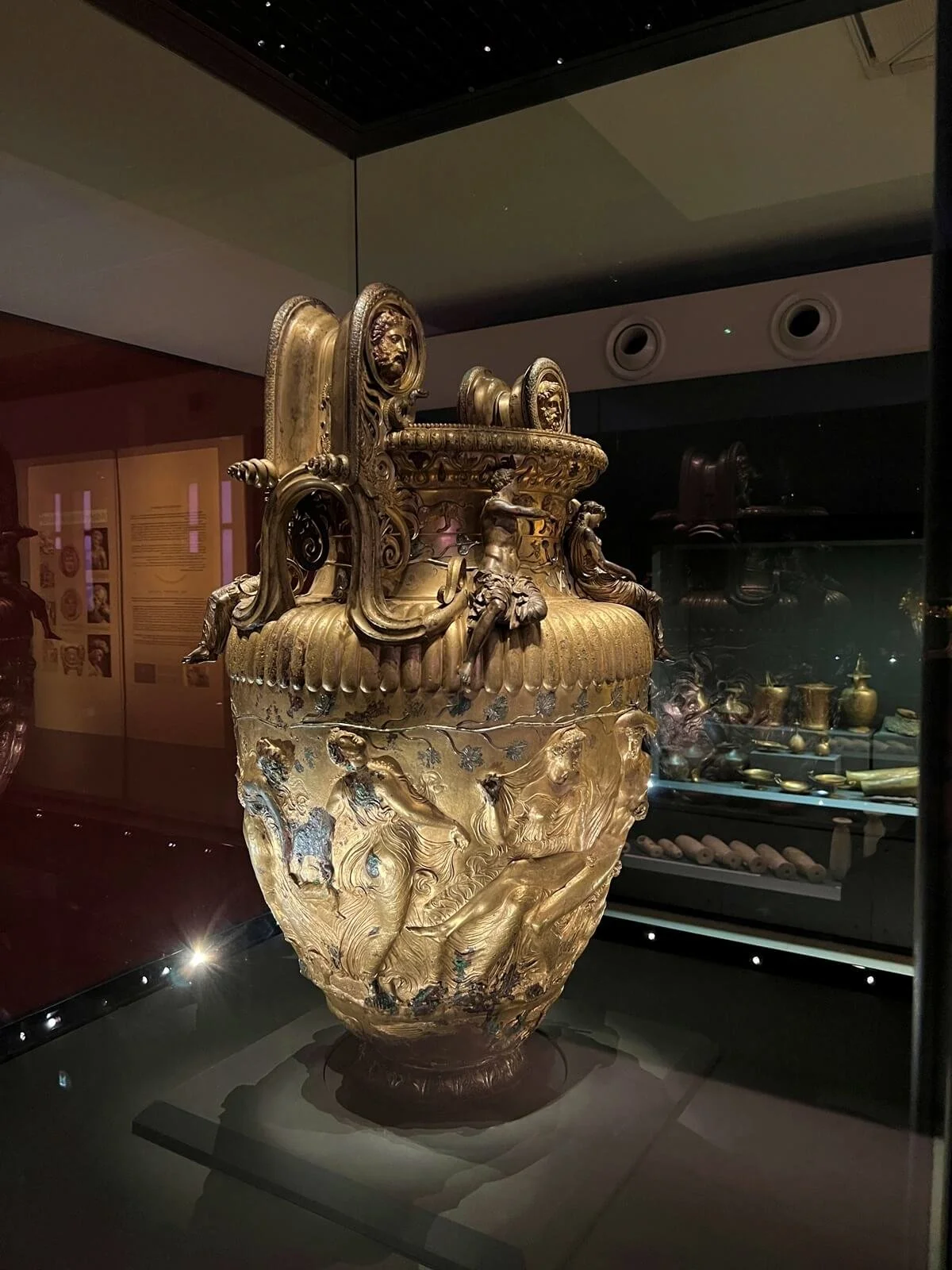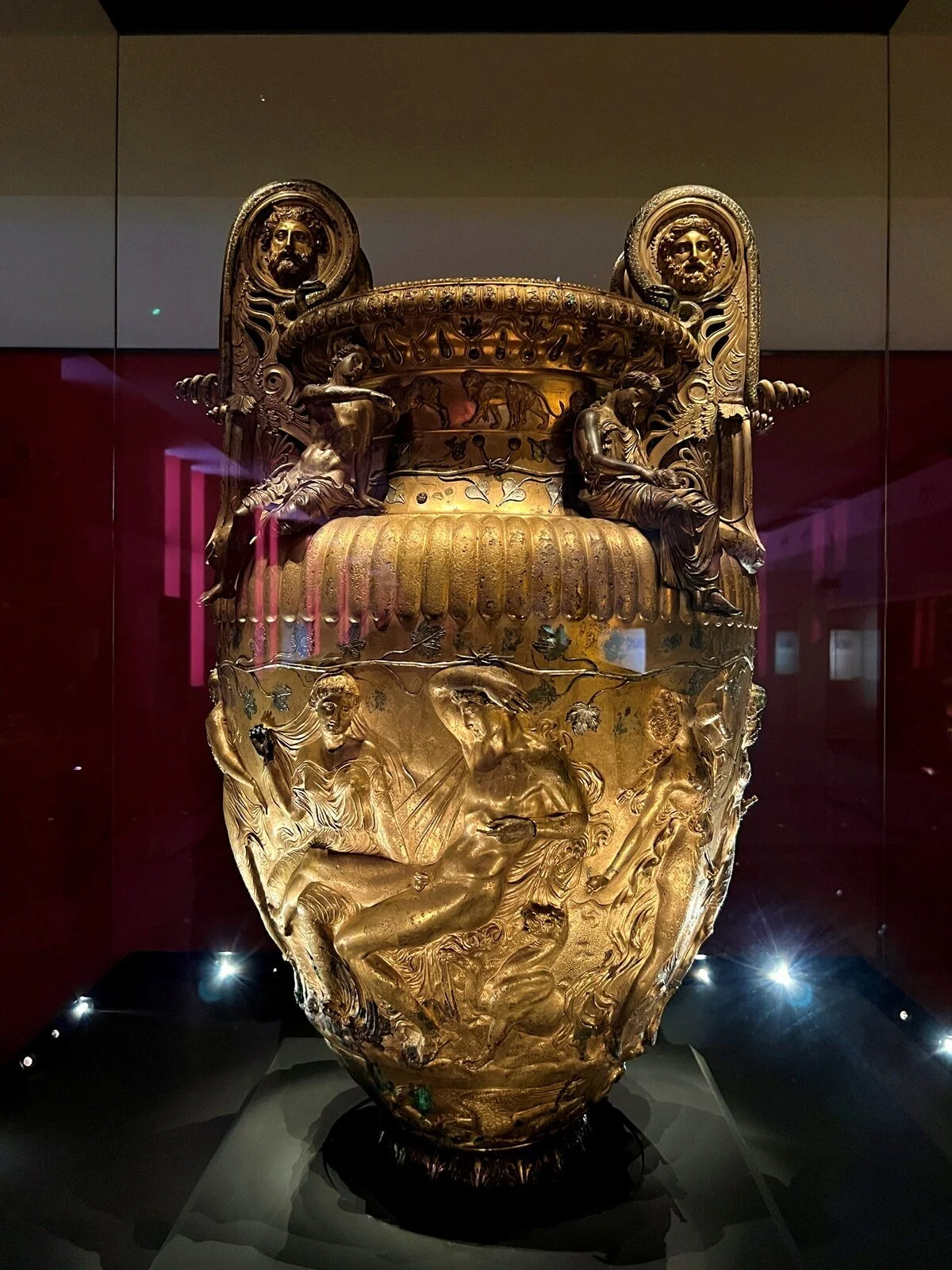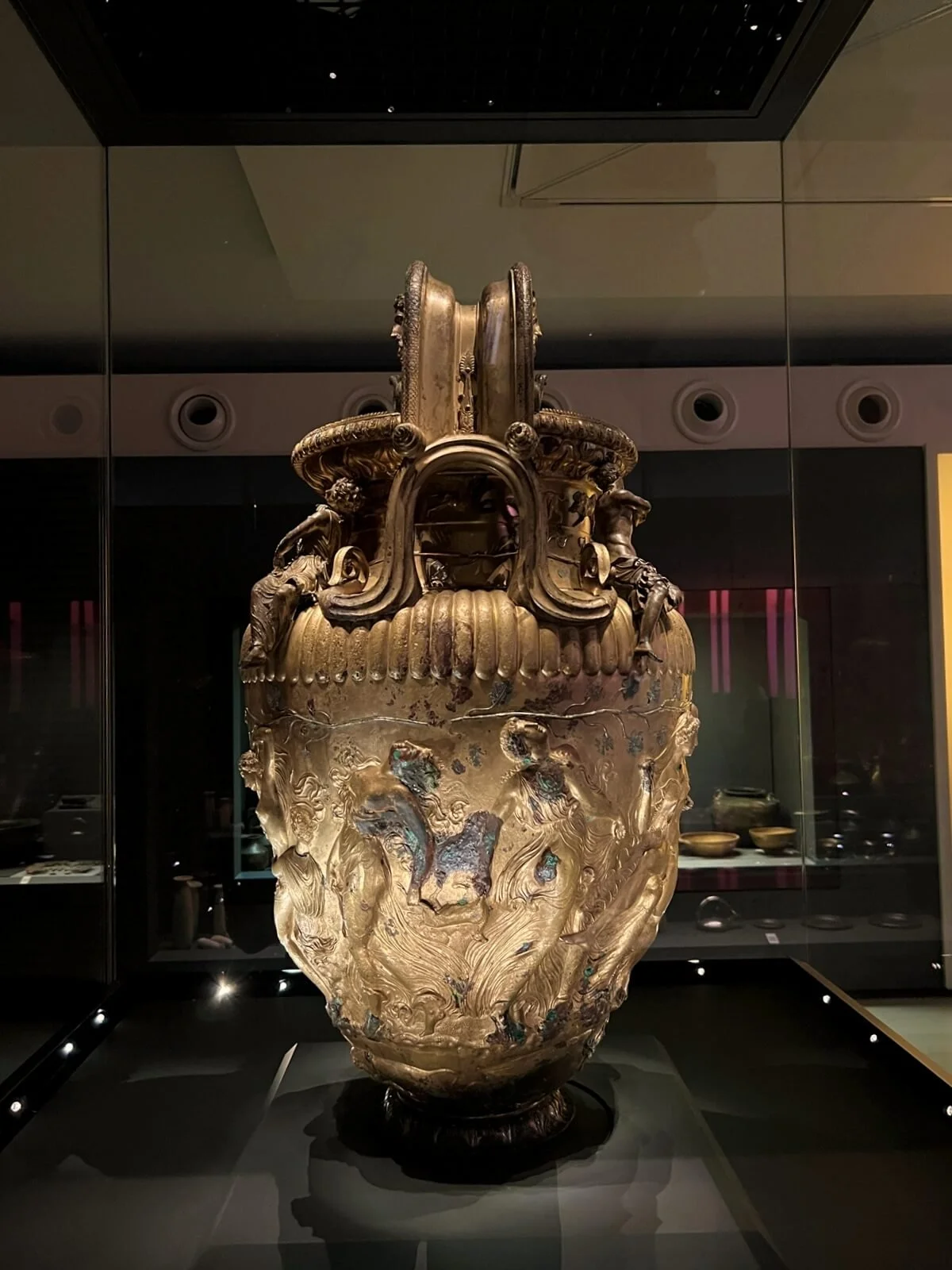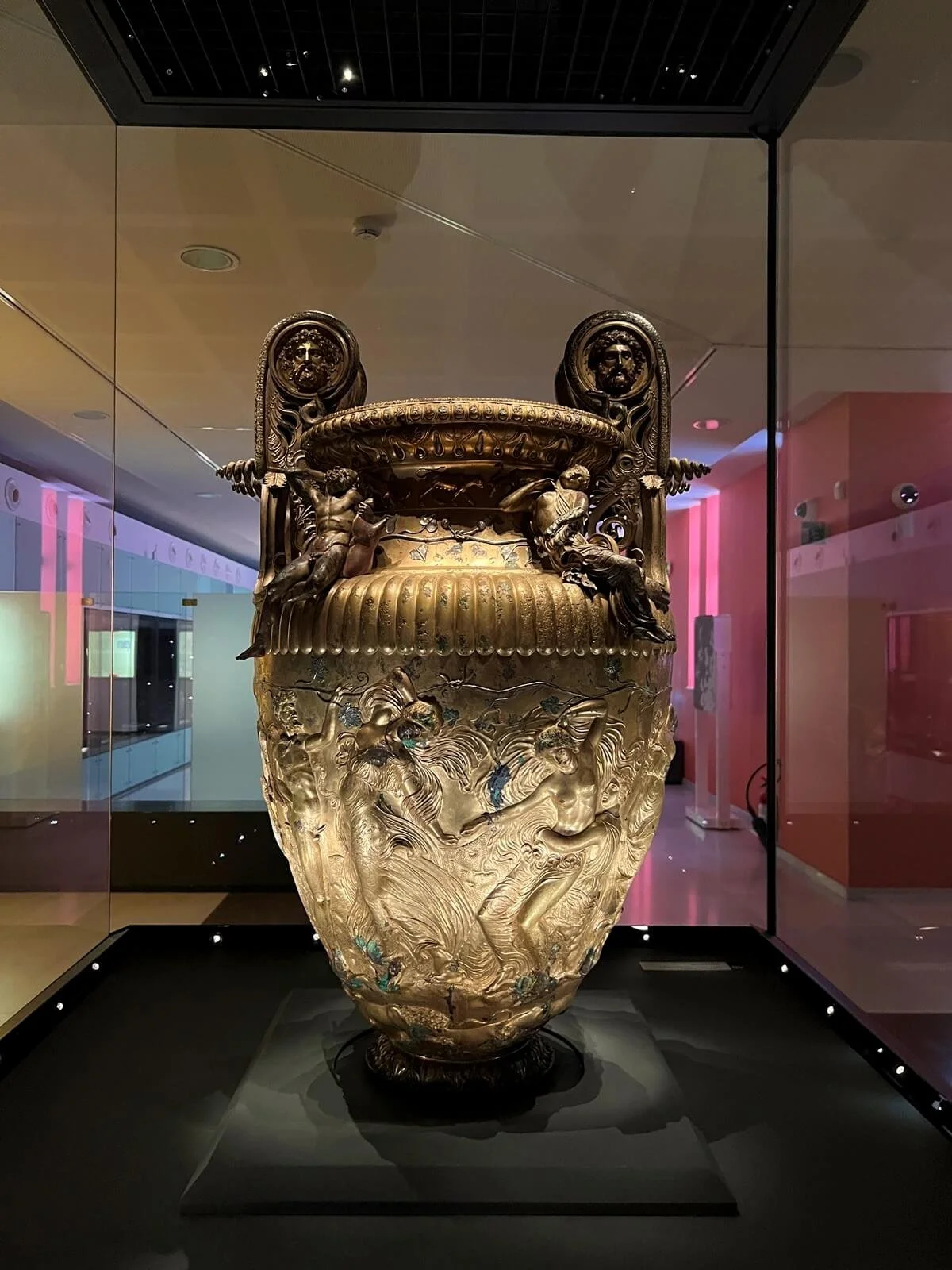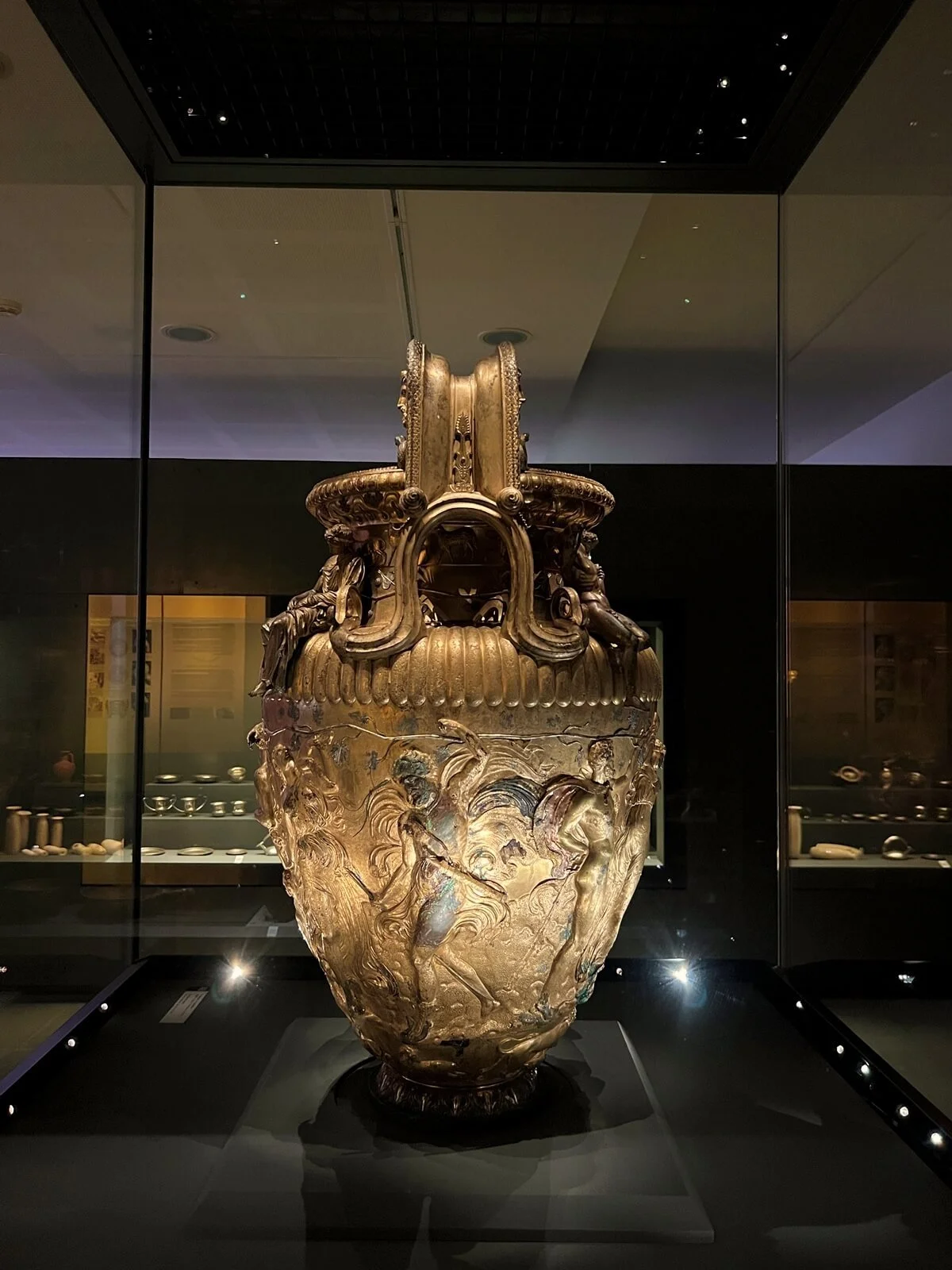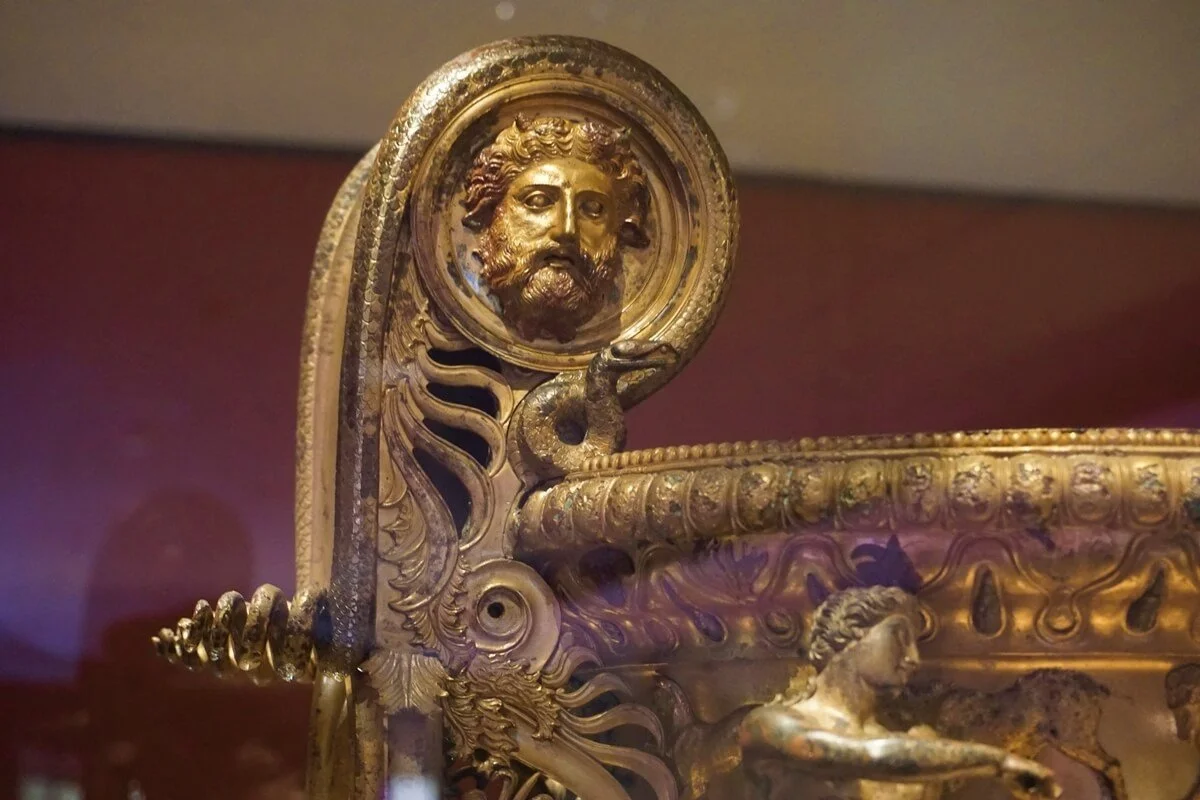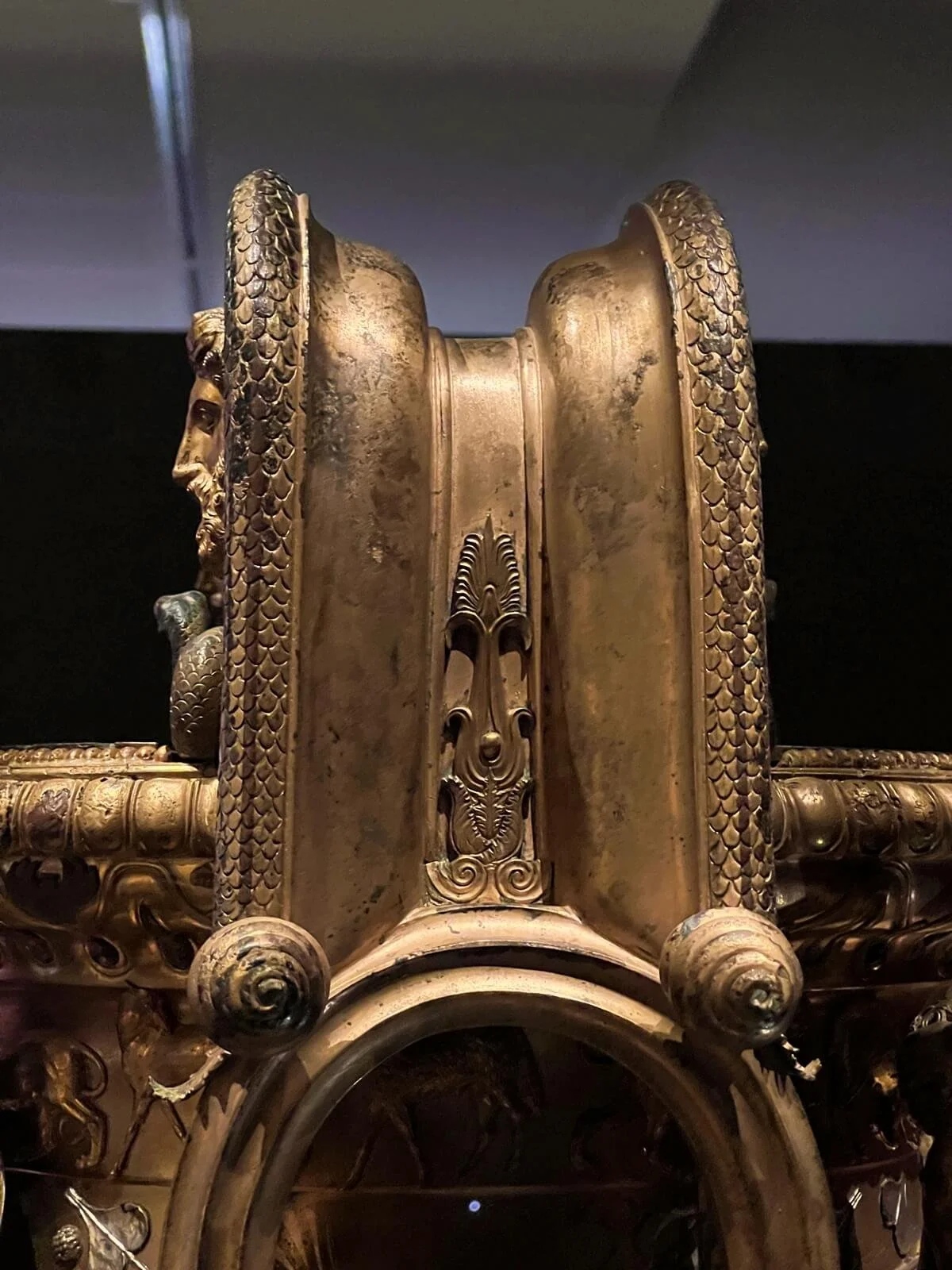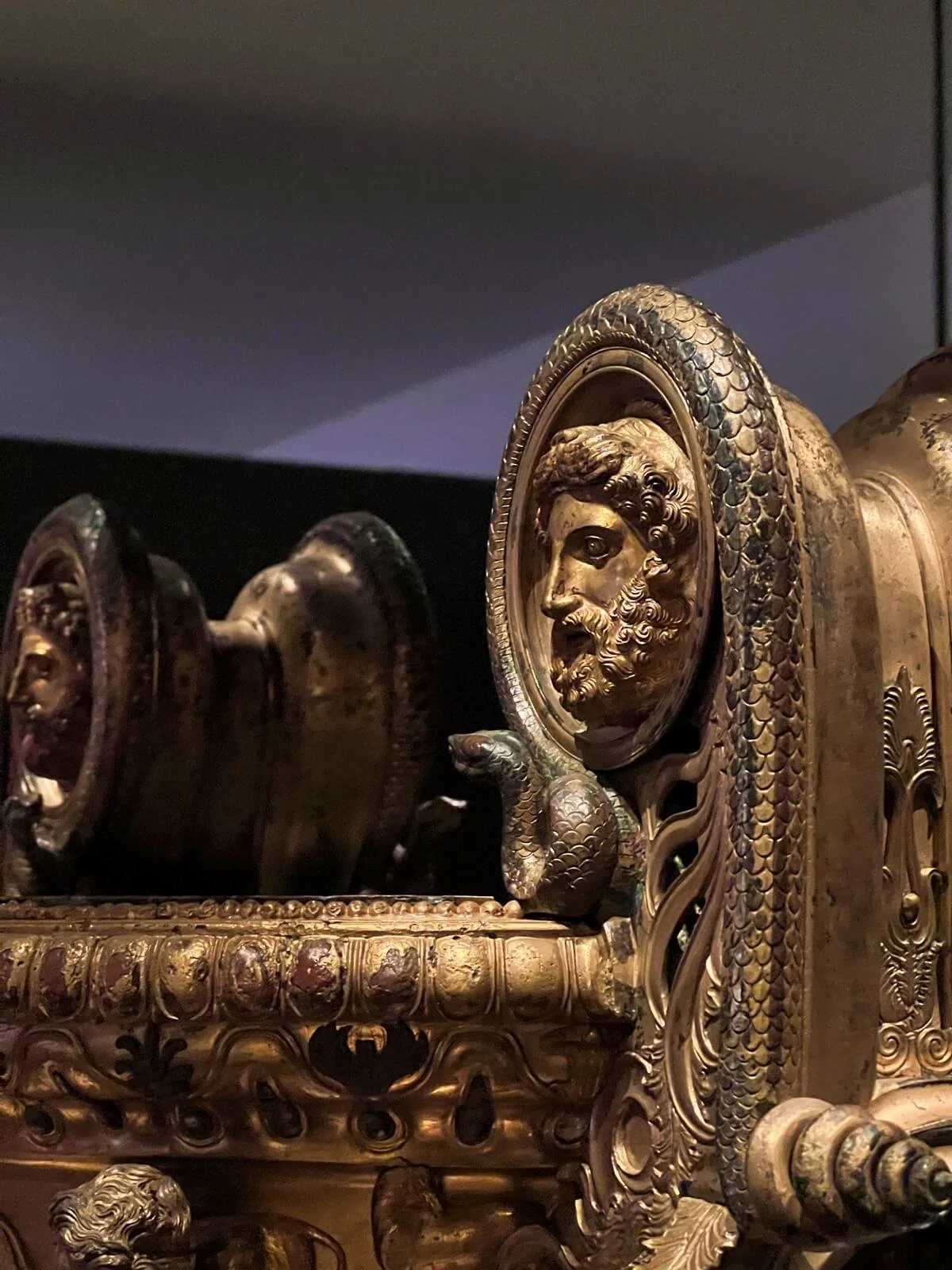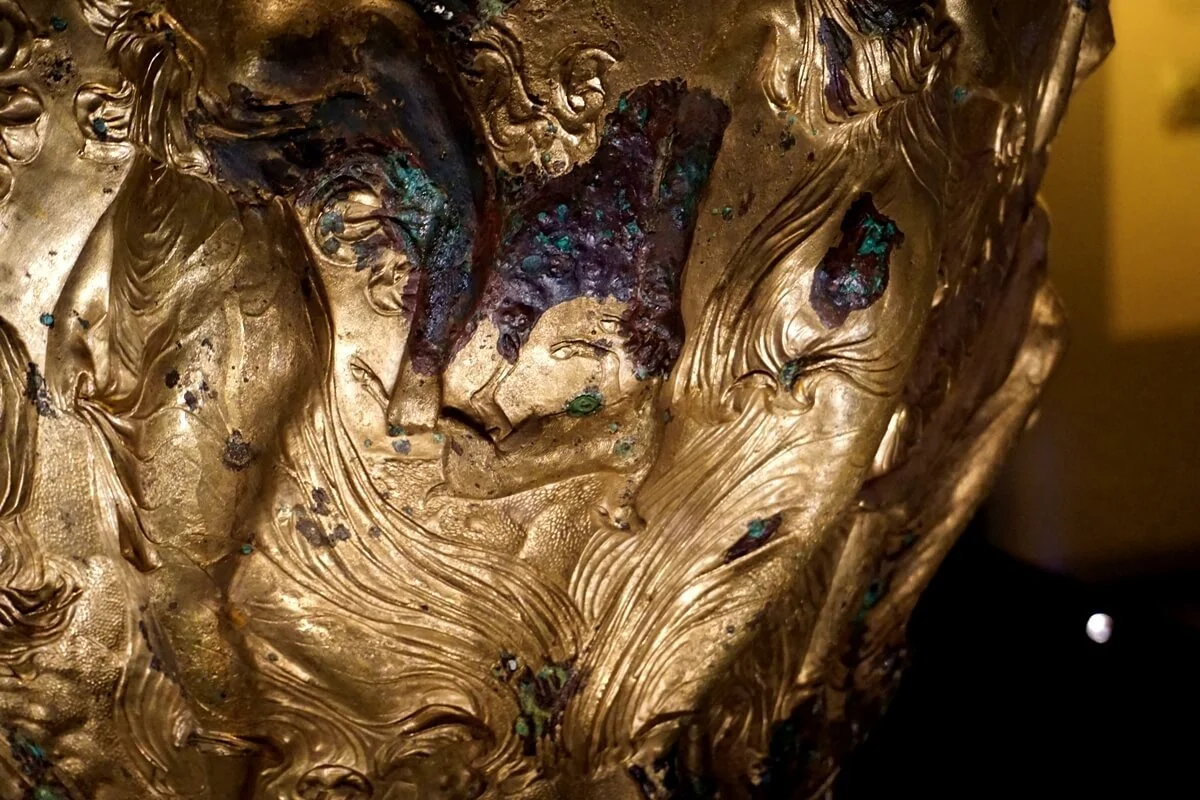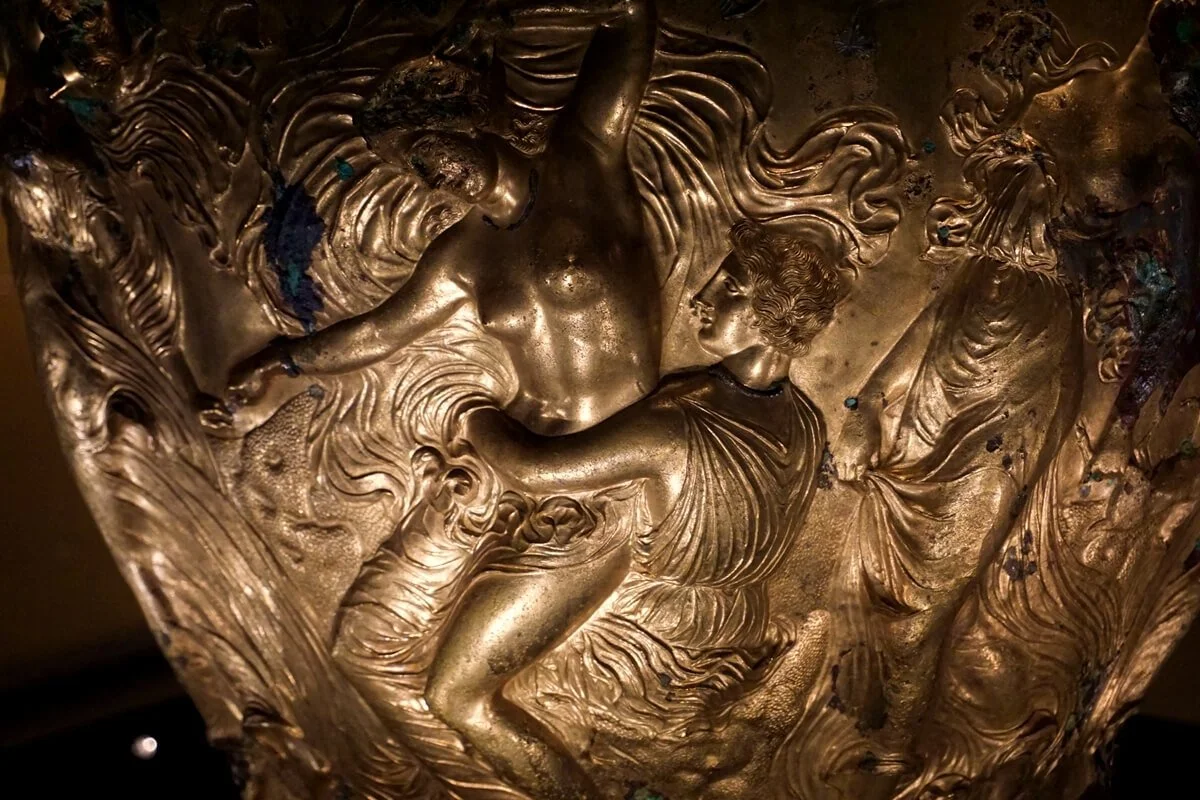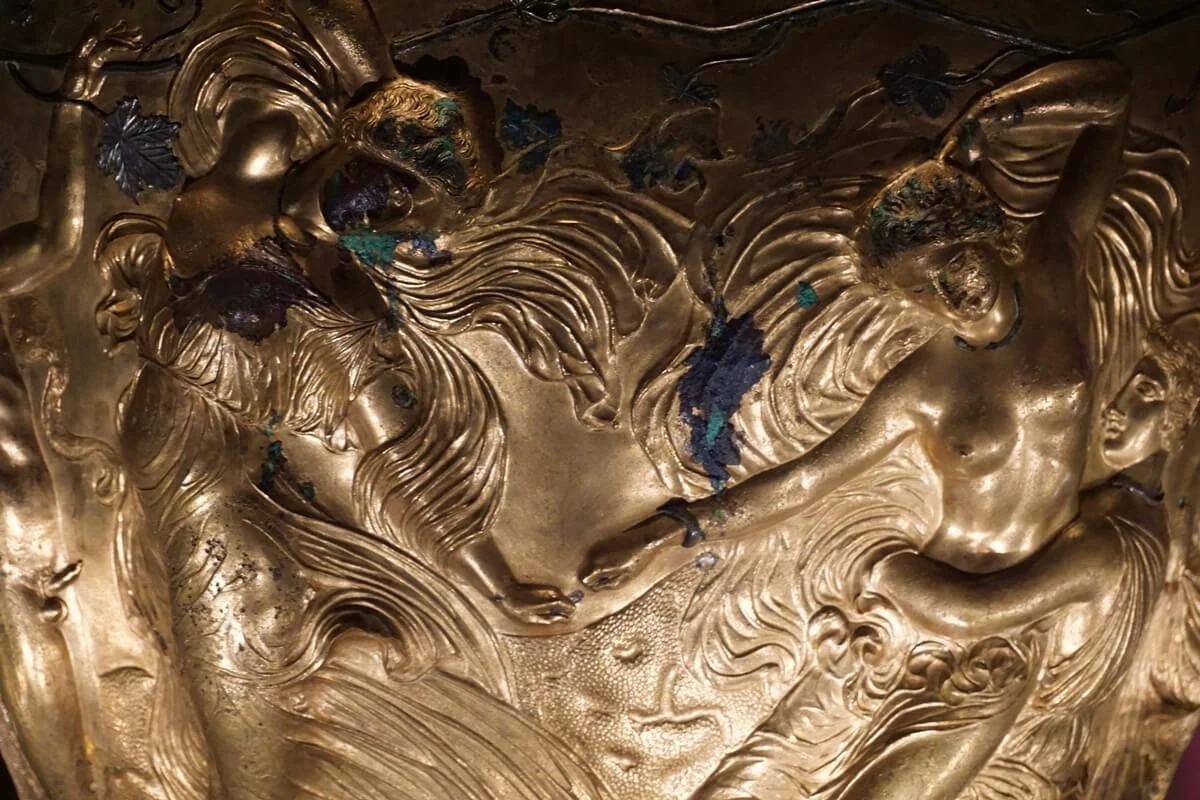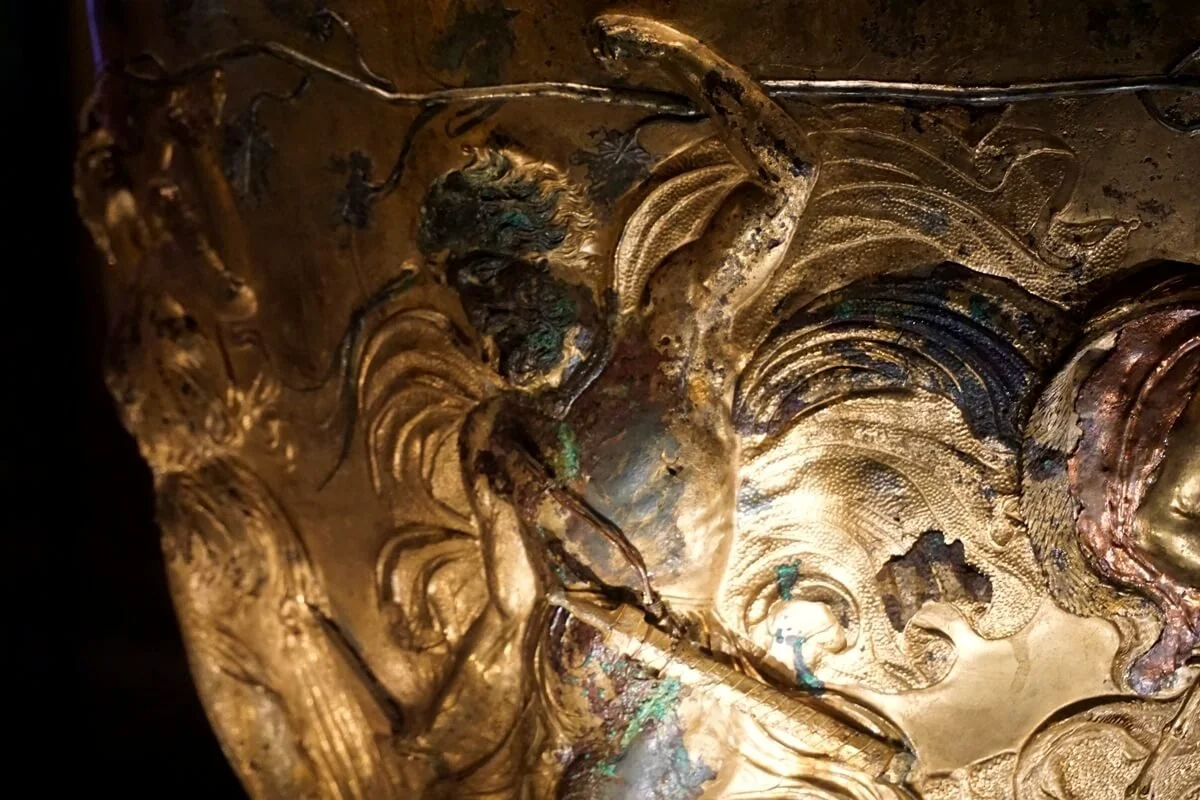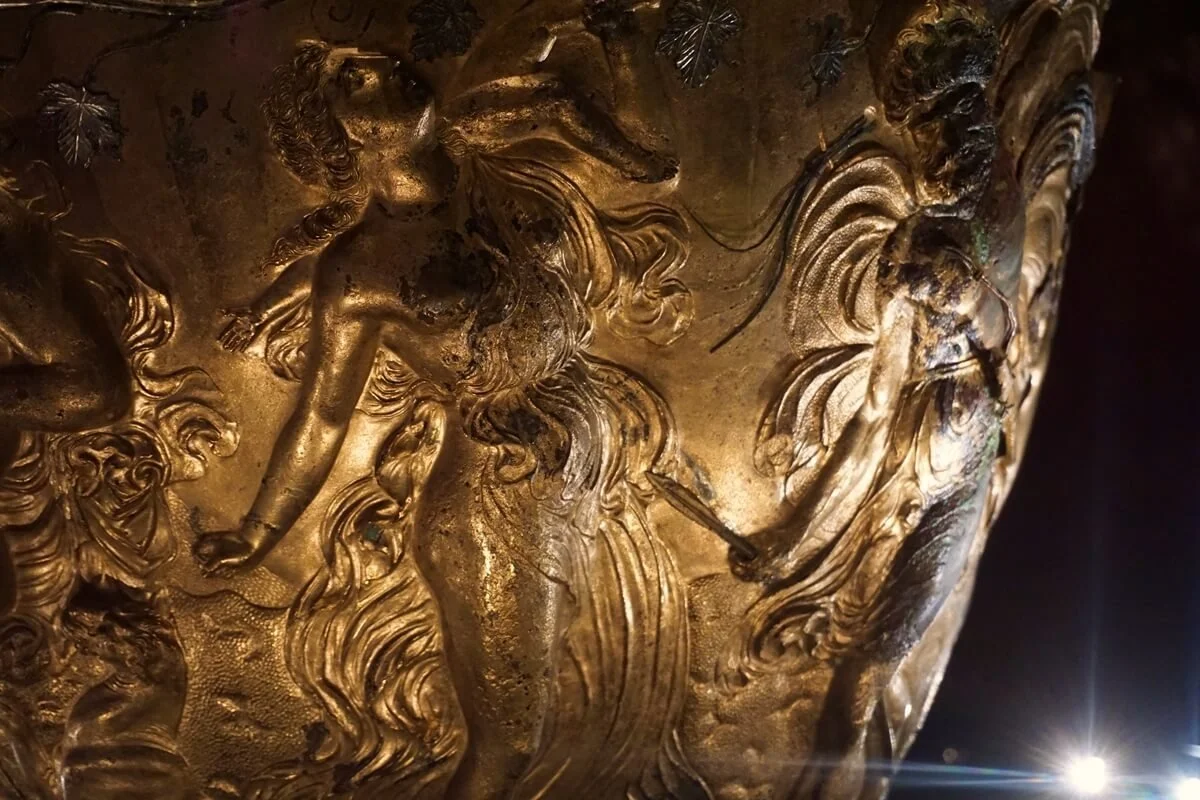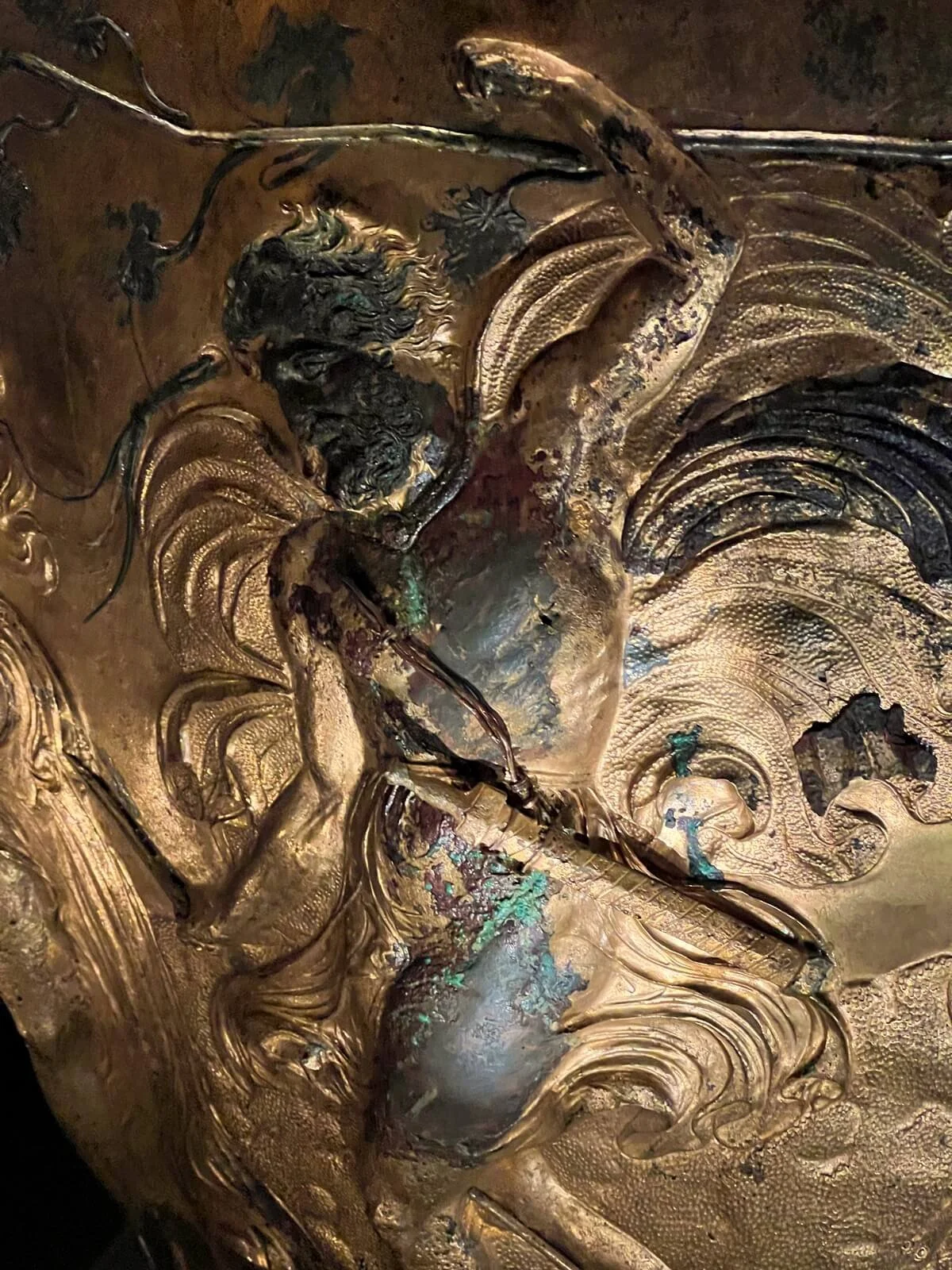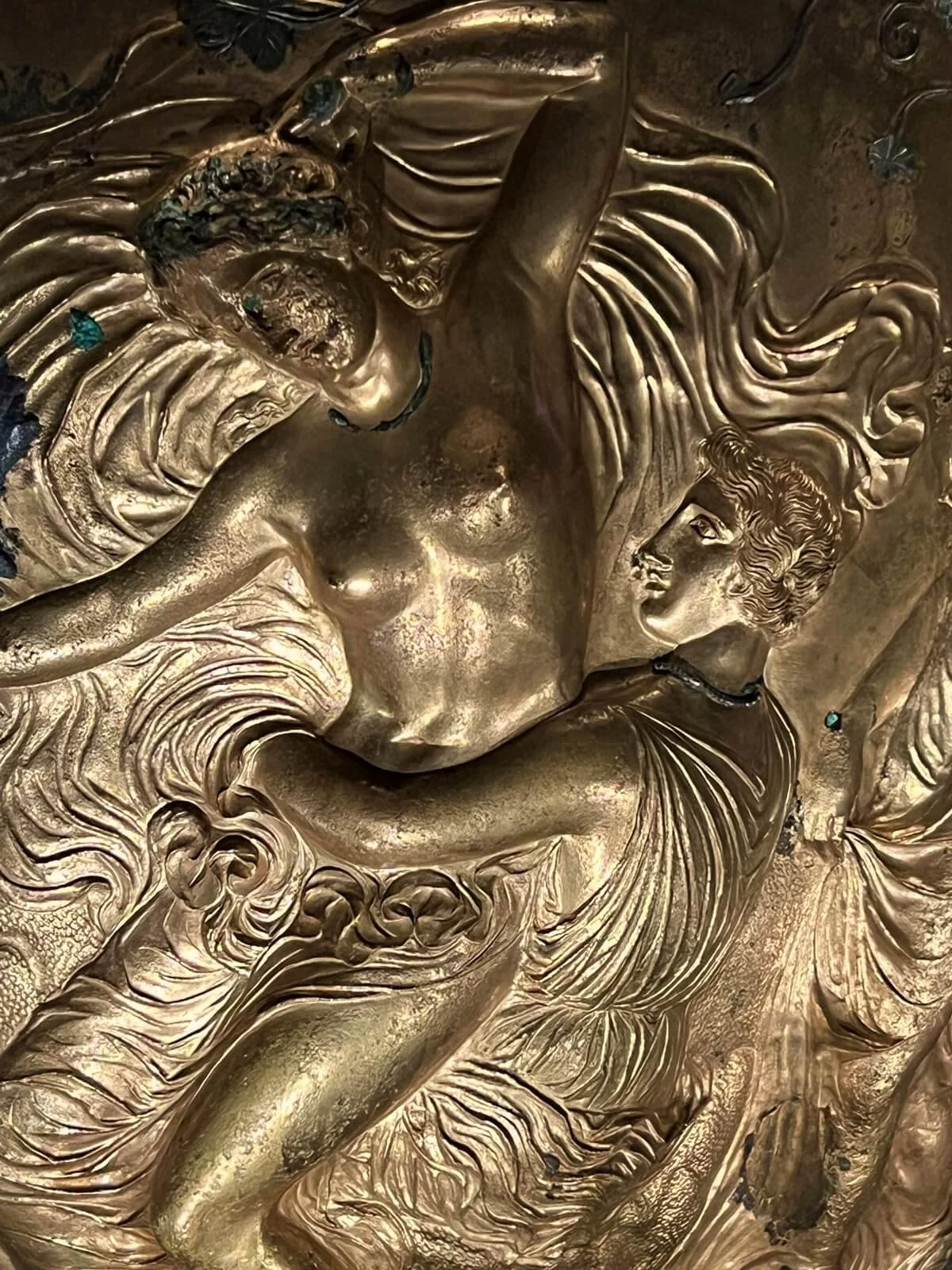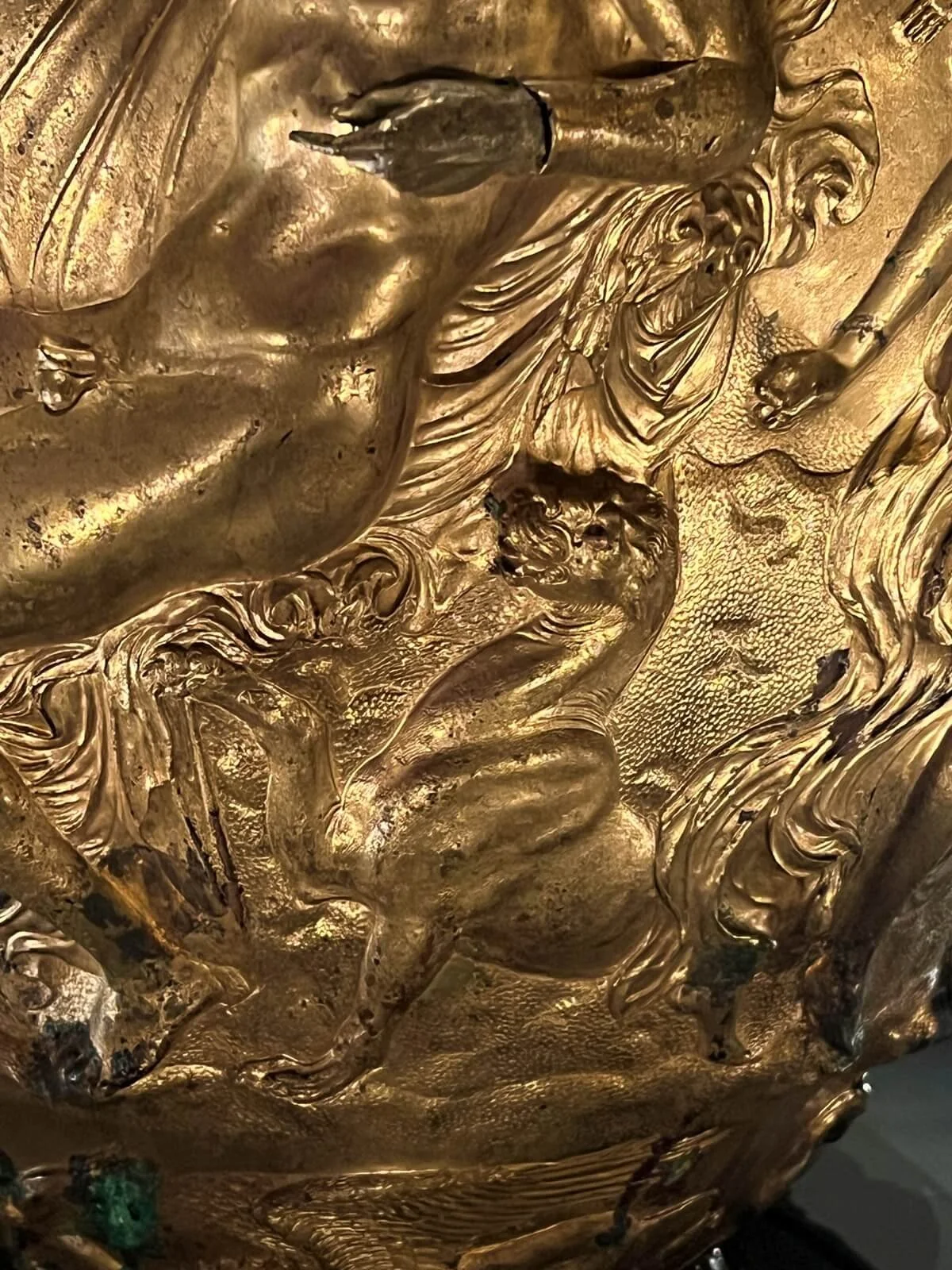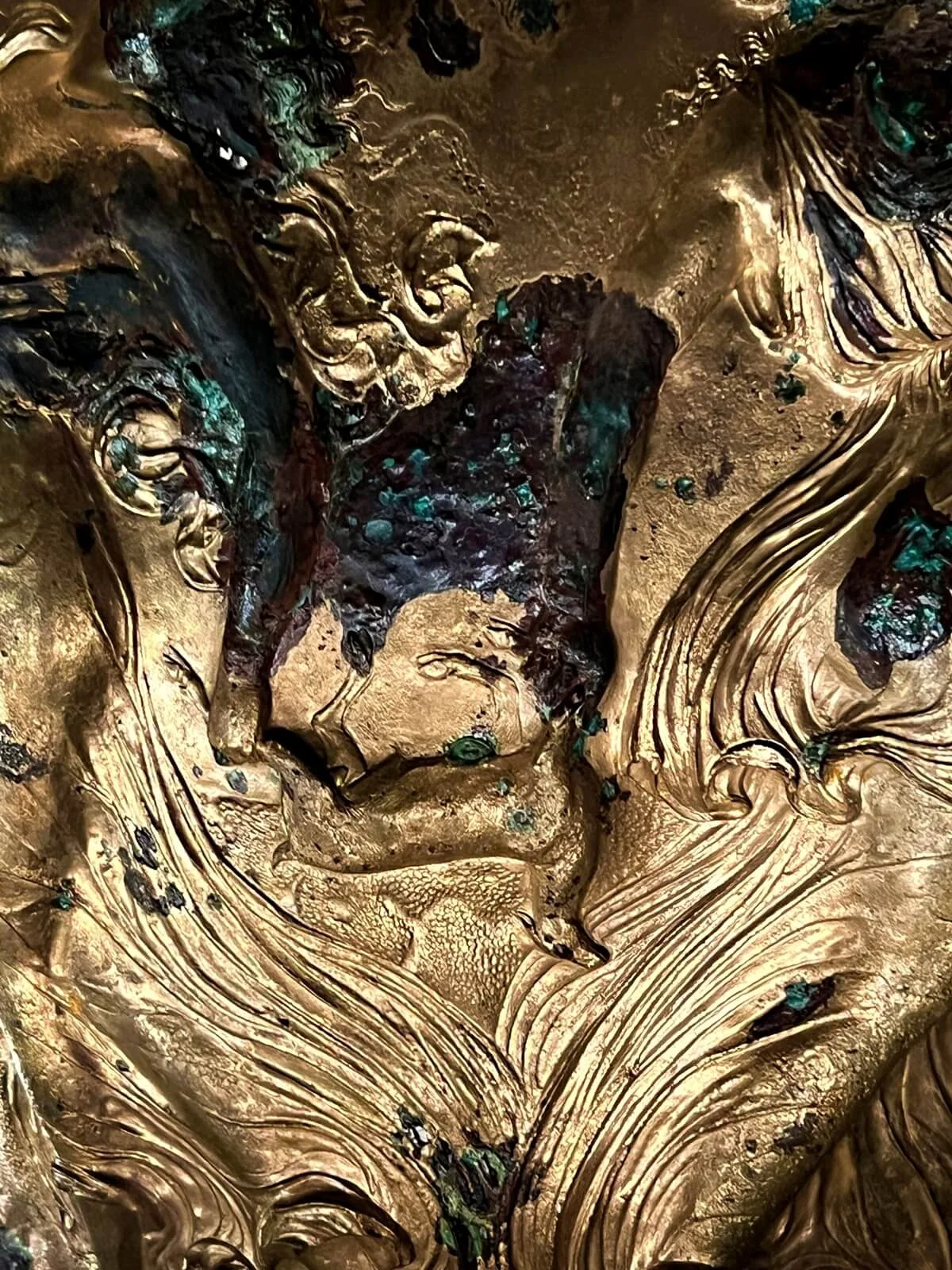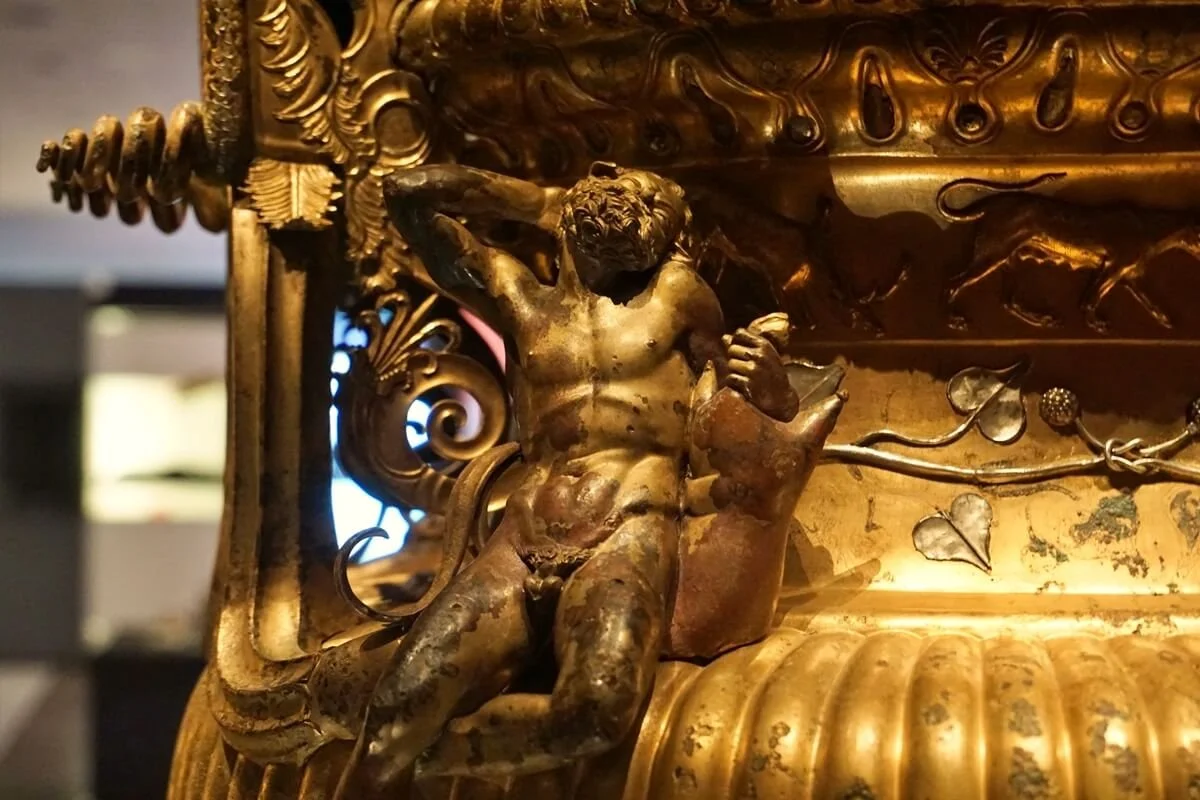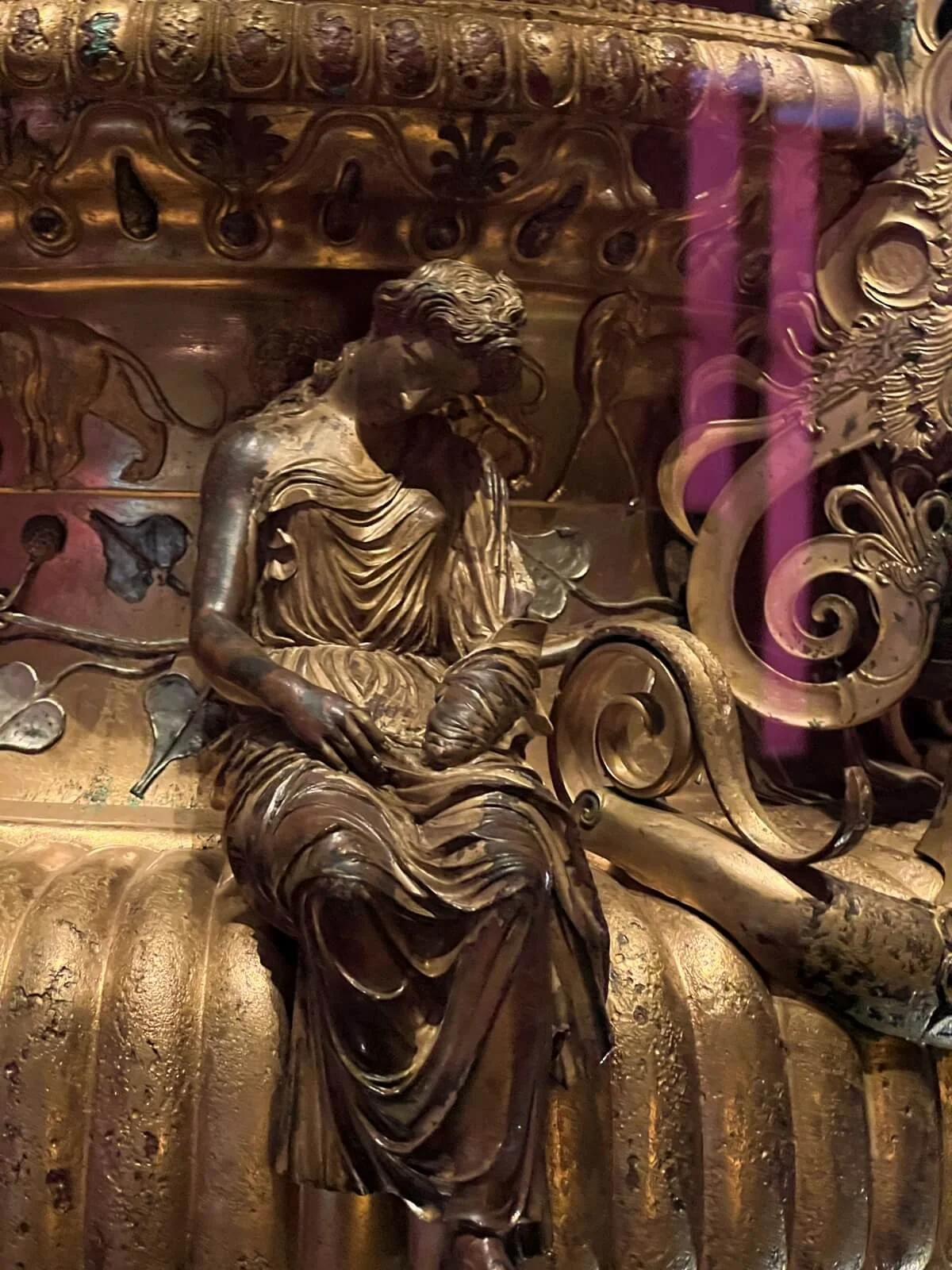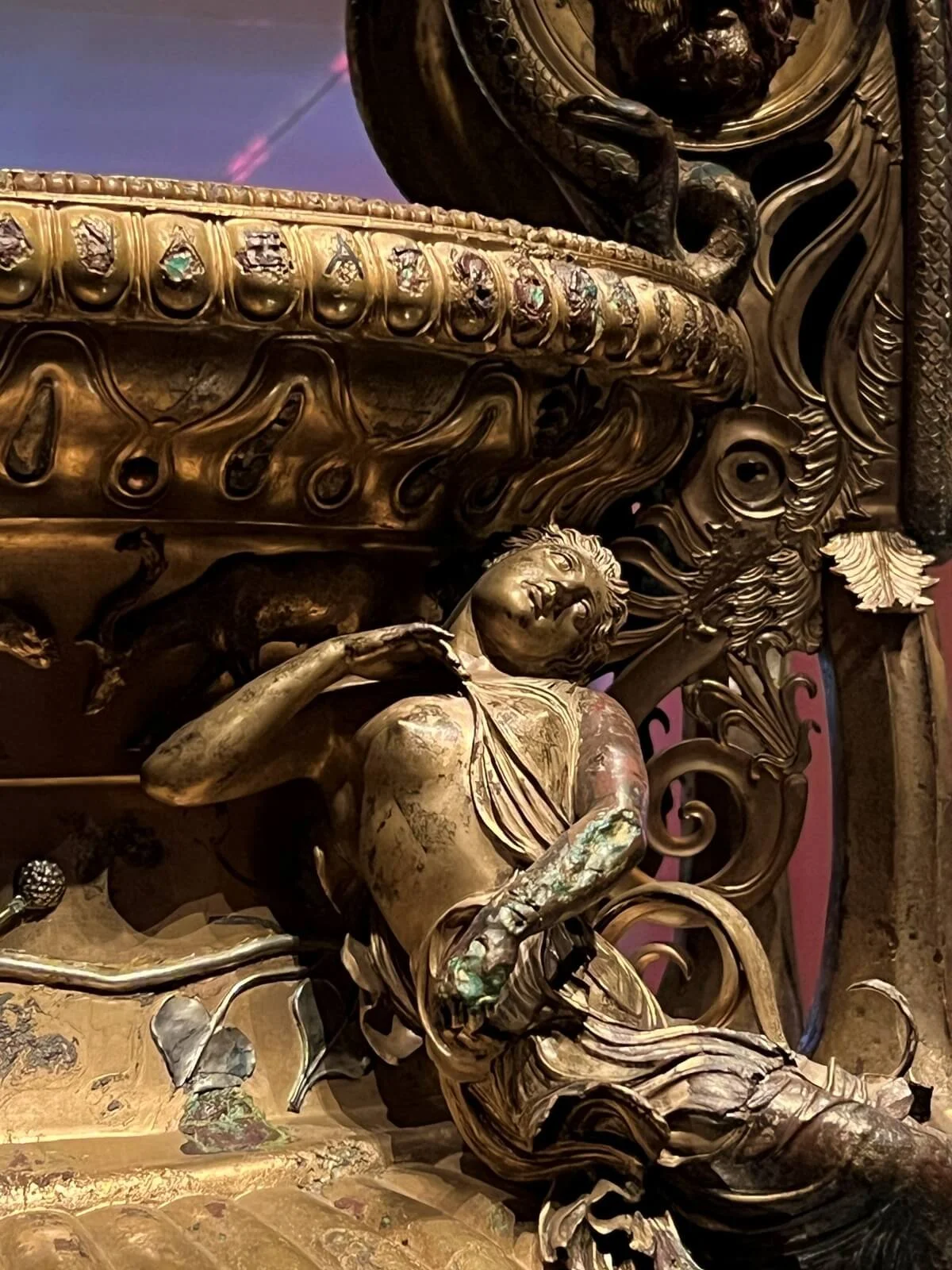Discovered in 1965 near Thessaloniki, Greece, the Derveni Krater stands as one of the finest examples of ancient metalwork from the Hellenistic period. More than just a vessel, this bronze masterpiece embodies the intersection of art, religion, and funeral customs in ancient Greece. Its rich and intricate decoration, featuring the god Dionysus and his mythological retinue, reveals not only the advanced craftsmanship of its time but also the profound symbolic meanings attached to the afterlife. Now housed in the Archaeological Museum of Thessaloniki, the Derveni Krater continues to fascinate historians, archaeologists, and art enthusiasts alike. This article explores the krater’s history, craftsmanship, symbolic iconography, and its significance in the ancient Greek worldview.
The Discovery and History of the Derveni Krater
The Derveni Krater was uncovered in a tomb in the Derveni Necropolis area, near the modern city of Thessaloniki, during an archaeological excavation in 1965. Found in Grave 2, it was used as a funerary urn, holding the ashes of a deceased aristocrat. However, the krater was originally designed for a different purpose, likely for mixing wine and water during banquets. Dated to between 330 and 320 BC, it is a product of sophisticated Hellenistic craftsmanship. The exact origins of the krater’s production remain debated, with some scholars attributing it to Athenian artisans, while others suggest it may have been crafted within the Macedonian court or by a skilled metalworker from the Ionian cities of Chalkidiki.
Craftsmanship and Material Composition
At first glance, the Derveni Krater appears golden, but it is, in fact, made of bronze with a high tin content, giving it its lustrous shine. This illusion of gold highlights the advanced metallurgical techniques of the time, which enabled artisans to produce visually striking pieces without the use of precious metals. The krater was hammered out of two large sheets of bronze and intricately decorated with reliefs and figures cast separately and later attached to the vessel. Its construction, involving both hammering and casting, demonstrates the high level of technical skill that was characteristic of Hellenistic metalwork. The krater’s elaborate design includes volute handles, detailed reliefs on its shoulder, and finely sculpted base elements, all contributing to its grandeur.
Photos by Dimosthenis Vasiloudis
The Iconography of Dionysus and Ariadne
The most remarkable feature of the Derveni Krater is its elaborate decoration, which focuses on the god Dionysus and his sacred marriage to Ariadne. On the main side of the krater, Dionysus is depicted seated on a rock, naked, with one leg draped over Ariadne’s thigh. Ariadne gazes lovingly at him while holding her bridal veil, a gesture commonly associated with marriage. Behind Dionysus stands a panther, an animal sacred to the god, symbolizing his wild and untamed nature. Surrounding the couple are lively maenads and satyrs, followers of Dionysus, engaged in ecstatic dance and celebration. The scene represents not just a divine union but also the idea of a joyous afterlife, where the deceased would join the gods in eternal revelry. This symbolic depiction of the afterlife offers insight into ancient Greek beliefs about death and the soul's journey beyond.
Symbolism and Funerary Customs
The choice to depict Dionysus and Ariadne’s union on the krater was no accident. In ancient Greek belief, Dionysus, the god of wine, ecstasy, and rebirth, was closely associated with both life and death. His presence on funerary objects like the Derveni Krater suggests a belief in the cyclical nature of existence, where death is not the end but a transition to another state of being. In this case, the marriage of Dionysus and Ariadne may symbolize the deceased's passage into a blissful afterlife, eternally united with a divine partner. This theme was particularly comforting for those who died unmarried, as it offered a vision of happiness and fulfillment beyond death. The lively and sensual imagery surrounding the couple further reinforces this idea, promising a jubilant and eternal existence in the afterlife.
Photos by Dimosthenis Vasiloudis
nscription and Ownership
An inscription in silver letters on the lip of the krater reveals the name of its owner: Astiouneios, son of Anaxagoras, from Larissa. Although it is unclear whether Astiouneios was the individual whose ashes were placed in the vessel, the inscription provides a rare glimpse into the personal ownership of such exquisite artifacts. This raises interesting questions about the social status and wealth of the family, who would have commissioned or acquired such a luxurious item for funerary use. The krater’s detailed craftsmanship and symbolic richness suggest that it was intended not just as a practical object but as a statement of power, prestige, and spiritual belief.
The Legacy of the Derveni Krater
Photos by Dimosthenis Vasiloudis
Today, the Derveni Krater remains one of the most important examples of Hellenistic metalwork and serves as a key artifact in understanding the religious and funerary practices of ancient Greece. Its combination of technical brilliance, artistic beauty, and deep symbolic meaning elevates it from a mere vessel to a cultural and spiritual treasure. Now displayed in the Archaeological Museum of Thessaloniki, the krater continues to draw the attention of scholars and visitors alike, offering a tangible link to the ancient past and its enduring views on life, death, and the divine. Through the Derveni Krater, we gain insight into the complexities of ancient Greek thought, where art, religion, and the afterlife were intricately intertwined.

